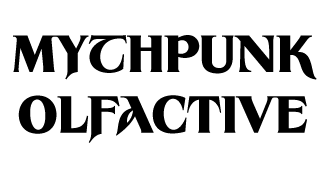About the "Gender Expression" tab on products
About
We've added "Gender Expression" as a metadata field to our fragrances, and we wanted to explain a bit more about our reasoning behind this as well as provide definitions for the expressions we've listed.
This field can be found on each fragrance's product page, and it can also be used as a filter.
Why we provide "gender expressions" for fragrances
Fragrance is a powerful tool for transformation, affirmation, and expression.
A person holds many things at the crossroads of their identity, so I like to think of fragrance as a little magical glamour - something you can try on to invoke the specific qualities you wish to embody or things you want to express about yourself.
There's also a safety component here, both psychological and physical. Olfaction is a complex neurological process that involves multiple regions in the brain, including the amygdala and hippocampus. This is how we form emotional associations with scent and it's also how our brain alerts us to dangerous smells in our environment, so it can be emotionally disarming when we smell like something that is incongruent with our identities or has a negative association for us.
A disclaimer about our definitions
Admittedly, as someone who has always had an uncomfortable relationship to traditional gender constructs, these definitions are imperfect and subjective. I've had severe body dysphoria for as long as I can remember, and this has had an impact on my own gender expression, my innate biases, and my technique as a perfumer. I hope that my perfumes can alchemize some of my uncertainty into a sense of playfulness that feels a little safer for those of us who have never felt represented or whole within the prescriptive confines of the binary.
If you leave review on our site for a perfume, I love seeing feedback about how you experienced its gender expression, especially if it's different from my own. Our perceptions are strongly linked to past associations, so this information is helpful to others, and occasionally I like to add additional perspectives to the perfume's tab.
Definitions
- genderfluid: either photorealistic or atmospheric to the point of being agender OR containing elements that lean masc or femme depending on your personal associations / style
- lo-femme: possesses some characteristics typically associated with femme fragrances, but these may be offset by atmospheric notes or playful additions that veer the fragrance into a genderfluid expression.
- hi-femme: possesses characteristics strongly associated with femme fragrances like florals, fruits, strong gourmand elements, or delicate notes.
- lo-masc: possesses characteristics typically associated with masculine fragrances, but these may be offset by atmospheric notes or playful additions that veer the fragrance into a genderfluid expression.
- hi-masc: possesses characteristics strongly associated with masc fragrances like woods, mosses, or superambers (although we don't make typically make superamber bombs).












